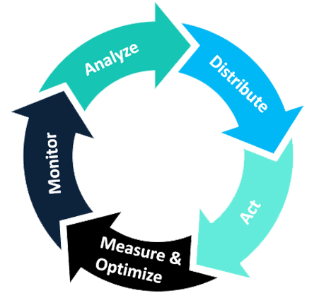1. Establish strategic governance and alignment
Organizations need a robust governance approach to operationalize the use of customer feedback, including unambiguous executive support – financially and otherwise – to act on feedback. VoC programs must be strategically aligned with broader organizational goals and embedded across business functions – not just within CX – to enable mobilization around common CX objectives.
A VoC program should include a team of stakeholders across different departments who own key components of the end-to-end customer experience, including those working in call centers, operations, fulfillment, sales, and marketing.3
The challenge with CX measurement
Fewer than 60% of CX professionals say that their organization can meaningfully act on the data, and only 40% think that stakeholders are confident in the CX metrics.2


